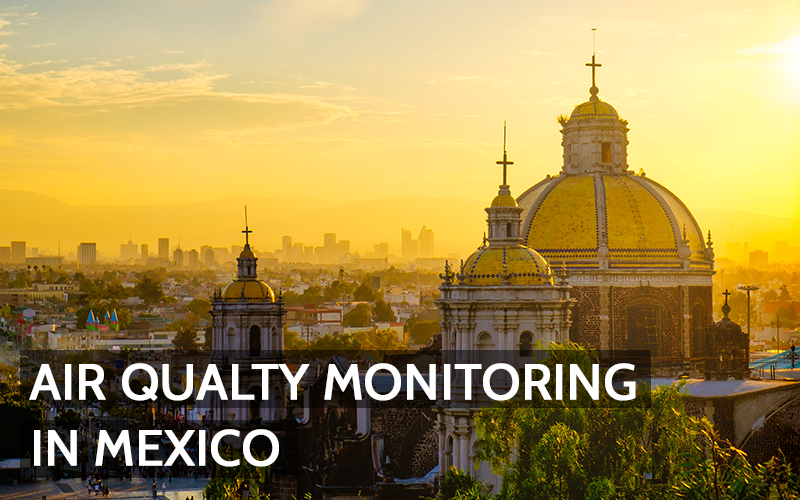As air quality concerns rise globally, Mexico has established robust mechanisms to monitor and control air pollution. This blog explores how air quality monitoring is handled in Mexico, who oversees it, and what standards are in place to protect public health and the environment.
Who Monitors Air Quality in Mexico?
In Mexico, the responsibility for monitoring air quality primarily rests with two agencies:
- The Secretaría de Salud (Secretary of Health) – Regulates permissible pollution levels and enforces health standards.
- Instituto Nacional de Ecología y Cambio Climático (INECC) – Serves as the technical research branch of the Secretary of Environment, (Secretaría del Medio Ambiente y Recursos Naturales) (SEMARNAT). INECC operates the National Air Quality Information System (SINAICA), gathering essential air quality data from monitoring stations nationwide.
Through these agencies, Mexico continuously collects and analyzes data on air quality to evaluate pollution trends and enforce environmental standards.
Mexico’s Air Quality Standards
Mexico regulates seven key pollutants, known as criteria pollutants, through the Normas Oficiales Mexicanas de Calidad del Aire (Air Quality Mexican Official Standards), which set maximum allowable concentrations:
- Ozone (O3)
- Carbon Monoxide (CO)
- Sulfur Dioxide (SO2)
- Nitrogen Dioxide (NO2)
- Particulate Matter (PM2.5 and PM10)
- Lead (Pb)
These pollutants are monitored to ensure that levels remain below thresholds deemed safe for human health. For example, standards limit PM2.5 to 45 µg/m³ daily and 12 µg/m³ annually to reduce the health risks associated with prolonged exposure to fine particles. Updates to these standards, such as those in 2014 for ozone and particulate matter, reflect ongoing efforts to align with global best practices.
The Role of Monitoring Stations and Data Collection
Mexico’s air quality monitoring network comprises numerous monitoring stations spread across urban and rural areas. In regions with high pollution, like Mexico City, monitoring data is crucial for implementing policies that target pollution sources such as vehicle emissions, industrial activities, and seasonal weather events like wildfires and dust storms.
Each monitoring station tracks pollutant levels in real-time, allowing authorities to respond to high pollution events quickly. For example, when pollution levels peak in Mexico City, authorities may issue alerts to limit vehicle usage and encourage residents to stay indoors. These measures help mitigate the immediate health impacts of poor air quality.
Addressing Local Challenges with Air Quality Monitoring
Despite significant progress, Mexico faces unique challenges in air quality management:
- Geographic and Climatic Factors – Certain regions, such as Mexico City’s basin, trap pollutants, making it challenging to maintain clean air. In border cities like Mexicali, industrial emissions, combined with limited monitoring resources, pose additional monitoring difficulties.
- Funding and Infrastructure Limitations – While Mexico has expanded its monitoring infrastructure, regions with severe pollution often lack adequate resources to maintain comprehensive data collection. Efforts continue to increase investment in these areas to better track emissions and enforce standards.
The Future of Air Quality Monitoring in Mexico
To improve air quality further, Mexico has implemented innovative programs that include hyperlocal monitoring and community-level initiatives. Collaborative efforts in Mexico City aim to establish a hyperlocal network, identifying pollution hotspots with high precision and enhancing data-driven decision-making. This approach mirrors successful projects in cities worldwide, like London and Los Angeles, which use microsensors to target pollution at the street level.
As Mexico continues to strengthen its monitoring infrastructure and update standards, the country aims to reduce pollution levels, improve public health, and foster sustainable urban environments. Enhanced data collection and community engagement are crucial for empowering residents to take action and drive cleaner air initiatives.


